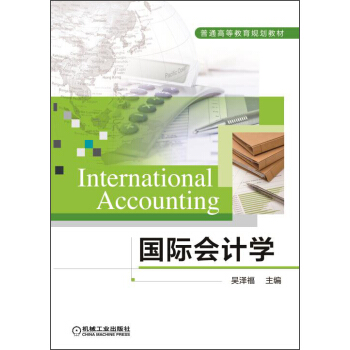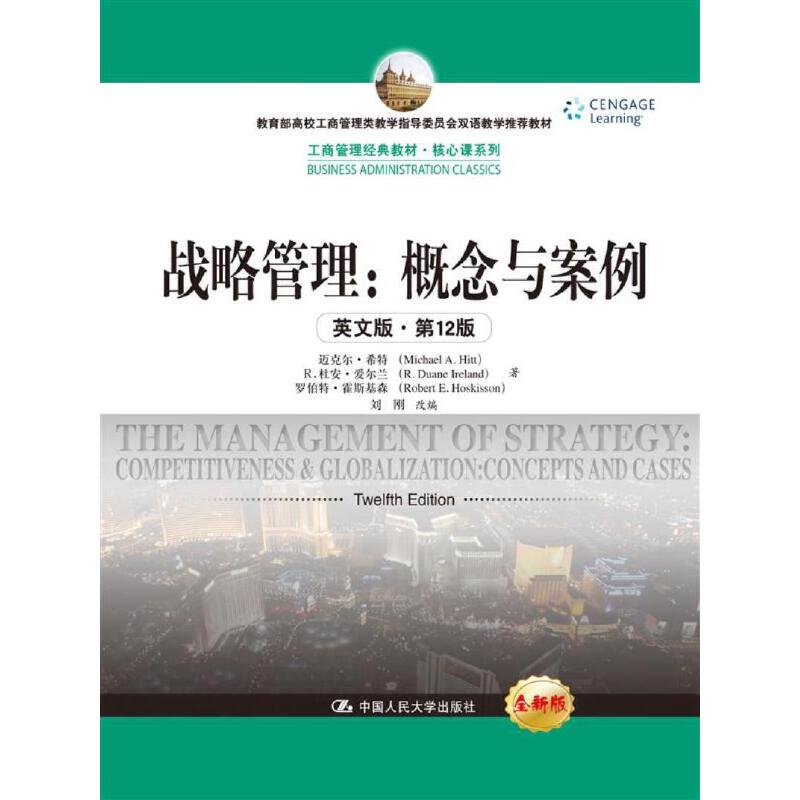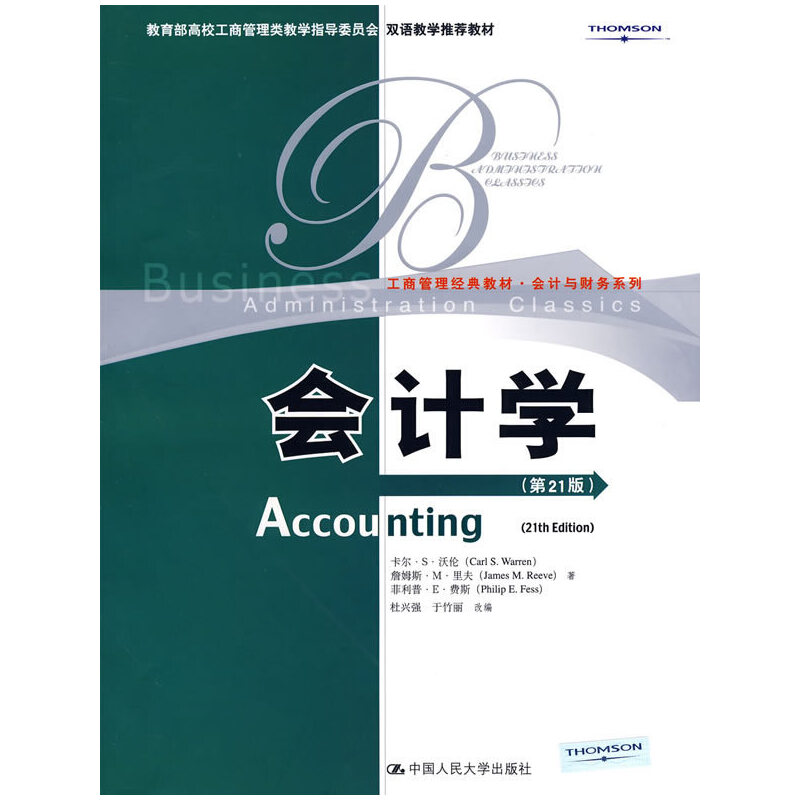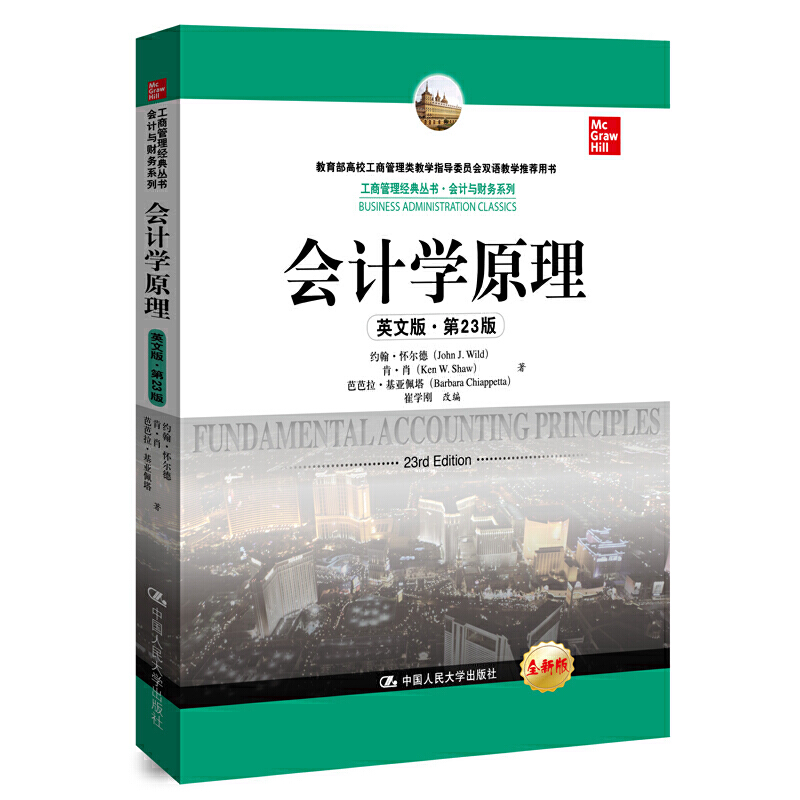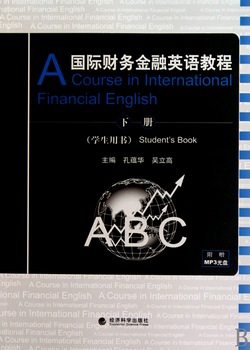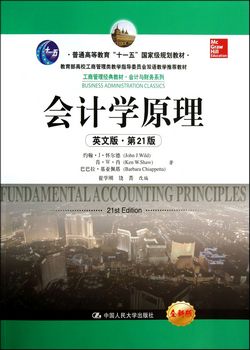- 机械工业出版社
- 9787111491750
- 1-2
- 137385
- 60258158-9
- 平装
- 16开
- 2015-05
- 515
- 325
- 管理学
- 工商管理
- F234.5
- 会计学
- 本科
内容简介
《国际会计学(英文版)/普通高等教育规划教材》以国际会计准则(IASB准则)与美国会计准则(FASB准则)为蓝本,情景式地解释了重要会计术语的基本定义,灵活地运用准则解决案例中的问题,细致地剖析了国际会计准则中存在的优缺点,详尽地介绍了国际会计的发展状况和热点问题。《国际会计学(英文版)/普通高等教育规划教材》正是基于这一宗旨安排的各章节内容,并确保文字简练、易学、易懂,同时在每一章的结尾附有讨论问题、练习题及其答案,使学生在学习新内容之前复习并应用该章的重点内容。《国际会计学(英文版)/普通高等教育规划教材》可以作为高等院校财务管理专业学生的教材,也可以作为广大财务从业人员学习财务管理英语的参考用书。
目录
Chapter 1 Introduction to Accounting and Business
1. Nature of Business and Accounting
2. Generally Accepted Accounting Principles
3. The Accounting Equation
4. Business Transactions and the Accounting Equation
5. Financial Statements
Chapter 2 Analyzing Transactions
1. Using Accounts to Record Transactions
2. Posting of Journal Entries to Accounts
3. Trial Balance
4. Discovery and Correction of Errors
Chapter 3 The Adjusting Process
1. Nature of the Adjusting Process
2. Recording Adjusting Entries
3. Summary of the Adjustment Process
4. Adjusted Trial Balance
Chapter 4 Completing the Accounting Cycle
1. Flow of Accounting Information
2. Financial Statements
3. Closing Entries
4. The Accounting Cycle
5. Fiscal Year
Chapter 5 Accounting Systems
1. Basic Accounting Systems
2. Manual Accounting Systems
3. Adapting Manual Accounting Systems
4. Computerized Accounting Systems
Chapter 6 Accounting for Merchandising Businesses
1. Nature of Merchandising Businesses
2. Financial Statement of Merchandising Businesses
3. Merchandising Transactions
4. The Adjusting and Closing Process
Chapter 7 Inventory
1. Control of Inventory
2. Inventory Cost Flow Assumptions
3. Cost of Inventory on Perpetual Inventory System
4. Inventory Costing Methods under a Periodic Inventory System
5. Reporting Merchandise Inventory in the Financial Statements
Chapter 8 Internal Control and Cash
1. Internal Control
2. The Limitations of Internal Control—Costs and Benefits
3. Elements of Internal Control
sh Controls over Receipts and Payments
5. Bank Accounts
6. Bank Reconciliation
7. Special-Purpose Cash Funds
8. Financial Statements Reporting of Cash
Chapter 9 Receivables
assification of Receivables
2. Uncollectible Receivables
rect WriteOff Method for Uncollectible Accounts
4. Allowance Method for Uncollectible Accounts
paring Direct Write-Off and Allowance Methods
6. Notes Receivable
7. Reporting Receivables on the Balance Sheet
Chapter 10 Fixed Assets and Intangible Assets
ture of Fixed Assets
2. Accounting for Depreciation
3. Disposal of Fixed Assets
tural Resources
5. Intangible Assets
6. Financial Reporting for Fixed Assets and Intangible Assets
Chapter 11 Current Liabilities and Payroll
1. Current Liabilities
2. Payroll and Payroll Taxes
3. Accounting for Payroll and Payroll Taxes
4. Employees Fringe Benefits
5. Contingent Liabilities
Chapter 12 Stock Transactions, and Dividends
1. Nature of a Corporation
2. Stockholders Equity
3. Paid-In Capital from Issuing Stock
4. Accounting for Dividends
5. Treasury Stock Transactions
6. Reporting Stockholders Equity
7. Stock Splits
Chapter 13 Bonds Payable and Investments in Bonds
1. Financing Corporations
2. Characteristics and Pricing of Bonds Payable
3. Accounting for Bonds Payable
4. Payment and Redemption of Bonds Payable
5. Investment in Bonds
6. Corporation Balance Sheet
7. Effective Interest Rate Method of Amortization
Chapter 14 Income Taxes, Unusual Income Items, and Investments in Stocks
1. Corporations Income Taxes
2. Reporting Unusual Items on the Income Statement
3. Earnings per Common Share
4. Comprehensive Income
5. Accounting for Investment in Stocks
Chapter 15 Statement of Cash Flows
1. Reporting Cash Flows
2. Statement of Cash Flows—The Indirect Method
3. Statement of Cash Flows—The Direct Method
References
1. Nature of Business and Accounting
2. Generally Accepted Accounting Principles
3. The Accounting Equation
4. Business Transactions and the Accounting Equation
5. Financial Statements
Chapter 2 Analyzing Transactions
1. Using Accounts to Record Transactions
2. Posting of Journal Entries to Accounts
3. Trial Balance
4. Discovery and Correction of Errors
Chapter 3 The Adjusting Process
1. Nature of the Adjusting Process
2. Recording Adjusting Entries
3. Summary of the Adjustment Process
4. Adjusted Trial Balance
Chapter 4 Completing the Accounting Cycle
1. Flow of Accounting Information
2. Financial Statements
3. Closing Entries
4. The Accounting Cycle
5. Fiscal Year
Chapter 5 Accounting Systems
1. Basic Accounting Systems
2. Manual Accounting Systems
3. Adapting Manual Accounting Systems
4. Computerized Accounting Systems
Chapter 6 Accounting for Merchandising Businesses
1. Nature of Merchandising Businesses
2. Financial Statement of Merchandising Businesses
3. Merchandising Transactions
4. The Adjusting and Closing Process
Chapter 7 Inventory
1. Control of Inventory
2. Inventory Cost Flow Assumptions
3. Cost of Inventory on Perpetual Inventory System
4. Inventory Costing Methods under a Periodic Inventory System
5. Reporting Merchandise Inventory in the Financial Statements
Chapter 8 Internal Control and Cash
1. Internal Control
2. The Limitations of Internal Control—Costs and Benefits
3. Elements of Internal Control
sh Controls over Receipts and Payments
5. Bank Accounts
6. Bank Reconciliation
7. Special-Purpose Cash Funds
8. Financial Statements Reporting of Cash
Chapter 9 Receivables
assification of Receivables
2. Uncollectible Receivables
rect WriteOff Method for Uncollectible Accounts
4. Allowance Method for Uncollectible Accounts
paring Direct Write-Off and Allowance Methods
6. Notes Receivable
7. Reporting Receivables on the Balance Sheet
Chapter 10 Fixed Assets and Intangible Assets
ture of Fixed Assets
2. Accounting for Depreciation
3. Disposal of Fixed Assets
tural Resources
5. Intangible Assets
6. Financial Reporting for Fixed Assets and Intangible Assets
Chapter 11 Current Liabilities and Payroll
1. Current Liabilities
2. Payroll and Payroll Taxes
3. Accounting for Payroll and Payroll Taxes
4. Employees Fringe Benefits
5. Contingent Liabilities
Chapter 12 Stock Transactions, and Dividends
1. Nature of a Corporation
2. Stockholders Equity
3. Paid-In Capital from Issuing Stock
4. Accounting for Dividends
5. Treasury Stock Transactions
6. Reporting Stockholders Equity
7. Stock Splits
Chapter 13 Bonds Payable and Investments in Bonds
1. Financing Corporations
2. Characteristics and Pricing of Bonds Payable
3. Accounting for Bonds Payable
4. Payment and Redemption of Bonds Payable
5. Investment in Bonds
6. Corporation Balance Sheet
7. Effective Interest Rate Method of Amortization
Chapter 14 Income Taxes, Unusual Income Items, and Investments in Stocks
1. Corporations Income Taxes
2. Reporting Unusual Items on the Income Statement
3. Earnings per Common Share
4. Comprehensive Income
5. Accounting for Investment in Stocks
Chapter 15 Statement of Cash Flows
1. Reporting Cash Flows
2. Statement of Cash Flows—The Indirect Method
3. Statement of Cash Flows—The Direct Method
References

